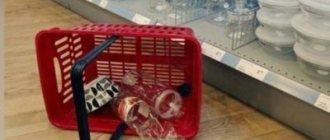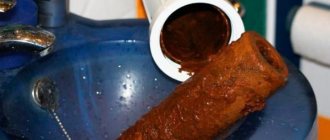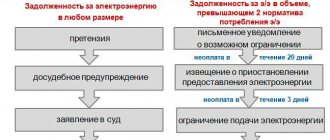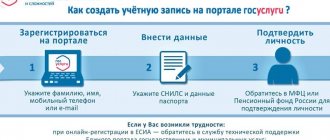Home / Complaints, courts, consumer rights / Services and consumer protection
Back
Published: 02.11.2018
Reading time: 6 min
0
228
Dry cleaning is an enterprise that provides household services and processes products. The rights of a dry cleaning client or consumer of its services are regulated by the following regulations:
- Law “On the Protection of Consumer Rights” (in particular, Articles 10, 14, 35).
- Civil Code of the Russian Federation.
- Resolution No. 1025 “On approval of the rules of consumer services.”
Since, according to the letter of Rospotrebnadzor dated 03/07/2006 N0100/2473-06-32, the activities of individual entrepreneurs and enterprises engaged in dry cleaning should be regarded as work, then the provisions of Art. 35 of the Law “On Protection of Consumer Rights”.
- Is an examination needed if the item is damaged?
- Filing a claim
- How much compensation should I demand?
- What to do if the dry cleaner refuses to compensate for the damage
According to the approved rules, after the items are handed over to the dry cleaner, the client must be given a receipt. It should contain the following information:
- Item name.
- Color.
- Texture, material, completeness and accessories.
- Information about inherent defects.
- Additional paid services ordered by the client (for example, urgent dry cleaning).
- Legal address of the enterprise providing the service.
- Full name, address and telephone number of the buyer.
- Name of the service provided.
- Date of receipt and execution of the order.
- Cost of the service provided.
During the initial inspection, the dry cleaner should conduct a thorough inspection and point out to the customer the possible negative consequences of the stain removal procedure. It is worth noting that even if the dry cleaning receipt issued contains a standard clause stating that the client was warned about the likely occurrence of defects, this does not relieve the company from liability for the damaged item.
If, upon receiving an item from dry cleaning, the client learns that the item was damaged, then he has every right to receive compensation for the damage caused. Indeed, according to the law “On the Protection of Consumer Rights”, full responsibility for the safety of things lies with the contractor.
Even if the consumer has signed an agreement stating that the dry cleaner is not responsible for the safety of things, it will not have legal force, since it infringes on the rights of the consumer (under Article 16 of the Law).
How to properly hand over an item to dry cleaning?
The rules for the provision of cleaning services are established by the Civil Code of the Russian Federation, Law No. 2300-1, as well as the Rules of Household Services approved by Government Decree No. 1025 of August 15, 1997. In accordance with these rules, an agreement is concluded between the client and the contractor, which is drawn up in the form of a receipt . The receipt must indicate the following:
- name and legal address of the performing company;
- Full name of the customer, his address and telephone number;
- description of the transferred item (name, color, texture, completeness);
- a list of defects that cannot be eliminated during the cleaning process;
- list of services provided by dry cleaning;
- planned order execution date;
- cost of services.
When accepting an item, an employee of a consumer service company must carefully inspect it. The results of the inspection are reflected in the receipt. If negative consequences may arise during the dry cleaning process, the client must be warned about this and a corresponding record must be recorded.
Important! The client has the right not to sign the receipt, as well as refuse services if the contractor cannot guarantee the safety of the item.
The thing is spoiled: first steps
Legislation protects consumer rights. Therefore, in the event of a defect or damage to the product, the client has grounds to demand compensation.
What to do before filing a claim with the dry cleaner? Let's consider a number of important recommendations.
- It is better not to accept a damaged product from the employee.
- Make a note on the receipt indicating what defects were discovered after dry cleaning.
- Draw up a report on the identified defects. If it is not possible to fill out such a form, you can limit yourself to a mark on the acceptance receipt.
After these steps, you should write a claim to the dry cleaner. You can draw up a document directly upon receipt of the product. But it would not be a mistake to return home, fill out the form and bring it to the organization.
Another possibility is that the defects were discovered at home. In accordance with Article 19 of the Law “On the Protection of Consumer Rights”, claims can be made within two years from the date of provision of the service. Despite this length of time, it is better not to waste time. If a document is submitted late, the delay will need to be justified.
The legislation of the Russian Federation provides for the legal framework for the activities of organizations providing services to the population. According to Article 35 of the Law of the Russian Federation “On the Protection of Consumer Rights”, if your item is damaged or lost, the dry cleaner is obliged to replace it within three days or compensate the client for double the cost of the damaged item, as well as the consumer’s expenses for dry cleaning, postage, examination, etc. .
Review the contents of the receipt that the dry cleaner gave you. In addition to the required details, a description of the item being handed over, the cost of work/services, the date of acceptance and the deadline for completion, the receipt contains text written in small print stating that dry cleaning can lead to defects, including loss of presentation, which is illegal, since it obviously translates responsibility and risk on the consumer and violates his rights.
Both the management of the dry cleaner and the dry cleaner itself as a legal entity may be held administratively liable.
Not every dry cleaner is ready to admit their guilt and compensate for the damage caused. But there are certain levers of influence here too:
- The receipt is your first proof of cooperation with the dry cleaner. Especially if the defects were discovered some time after the work was carried out. Therefore, under no circumstances throw it away.
- Send the item for examination; only on the basis of this conclusion are further demands possible. Be prepared for the fact that two examinations may be required - technological and merchandising. The first identifies damage resulting from non-compliance with technological standards by a consumer service enterprise. The second is assigned in the absence of a receipt to determine the full market value of the goods. The cost of both examinations will have to be paid by the consumer. If the dry cleaner is found guilty, all costs incurred will be reimbursed by the defendant. If during the examination it turns out that the resulting defect was due to hidden defects in the item itself, then the manufacturer must be responsible for it. In this case, the claim can be forwarded to him.
- Do you have all the documents on hand? Feel free to write a complaint to the dry cleaner.
We invite you to read: Vacation schedule for 2020: top 10 important issues
What claims can a consumer have against a dry cleaner?
When returning an item from dry cleaning, the client must check it for defects. In case of significant damage or violation of presentation, the customer has the right to file claims against the contractor (Article 25 of Law No. 2300-1). At his choice, the client can:
- demand free correction of defects;
- ask to reduce the price of services;
- apply for repeated dry cleaning without charging a fee;
- demand reimbursement of expenses for cleaning the item from another contractor.
The parties agree on the deadlines for eliminating deficiencies, indicating them in the contract or consumer application. In case of violation, the client has the right to refuse services and return the money.
When canceling a contract for the provision of services, the client has the right to demand:
- reimbursement of the cost of the item in double amount;
- refund of money paid for dry cleaning;
- payment of penalties for delay in fulfilling his requirements;
- payment of a fine of 50% for refusal to satisfy the claim;
- compensation for moral damage.
The receipt may state in small print that there is a risk of damage to the item during the cleaning process. If the client did not pay attention to this and signed his name, then difficulties may arise when returning the money and claiming damages. In this case, you should contact a professional lawyer.
An example from judicial practice. Ivanov E.A. I contacted Clean Relations LLC for dry cleaning services for my jacket, which was accepted based on the receipt. Upon receiving the item back, the client discovered that stains had appeared on the jacket, its color had changed, and the size had been reduced by several sizes. The consumer contacted the seller of the product for an examination. The seller's commission determined that the product should not be exposed to high temperatures; the manufacturer's recommendations were not followed during cleaning. Ivanov E.A. filed a claim with the consumer service company, demanding compensation for the losses caused. LLC "Clean Relations" refused, since, in the opinion of the contractor, the technology was followed and the product retained its good presentation. The customer considered that his rights were violated and went to court to protect his rights. During the consideration of the case, the court found that, in accordance with the concluded agreement, the defendant undertook to provide a range of services not only for dry cleaning, but also to determine the properties and quality of the material provided for cleaning in order to select the necessary materials to provide the service without damaging the product. Since these measures were not carried out, the cleaning was carried out poorly. Based on these circumstances, the appellate court satisfied the demands of Ivanov E.A. (Appeal ruling of the Moscow City Court dated July 10, 2019 No. 33-30236/19).
We must remember! The client must keep the receipt of the item, since if defects are discovered after cleaning, the document will serve as proof that the item was in good condition before the item was sent to the dry cleaner.
Sample statement of claim against dry cleaning
To Leninsky District Court
Ekaterinburg
Plaintiff:
Respondent:
State duty: exempt from payment on the basis
pp. 4 clause 2 and clause 3 art. 333.36 of the Tax Code of the Russian Federation,
as well as paragraph 3 of Art. 17 of the Law of the Russian Federation “On the Protection of Consumer Rights”
STATEMENT OF CLAIM
on the protection of consumer rights to dry cleaning
On January 31, 2012, a gray sheepskin coat belonging to the plaintiff was handed over to the dry cleaner-laundry “Jaguar”, owned by IP M. The defendant was required to provide dry cleaning and dyeing services for the plaintiff's sheepskin coat. The service was paid for using a Groupon discount coupon 4128872/36691, the cost of which was 950 rubles, and an additional 300 rubles were paid when taking the item to the dry cleaner.
The item was purchased on 01/18/2011. The period for wearing the product is from 01/18/2011 to 03/15-20/2011, from 12/01/2011 to the date of acceptance into the defendant’s organization. Upon acceptance of the product, minor contamination was noted on the bends of the sleeves and in the area of the pockets; the level of wear was determined to be 50%.
When the item was first returned from dry cleaning, the following defects were discovered: the leather of the sheepskin coat became thinner, took on a washed-out appearance, especially in the pocket area, there were brown stains on the cuffs and shoulders, pieces of leather began to differ from each other in color, the texture changed - the “velor” layer was missing " The item acquired an unpleasant odor, the fur on the collar became matted, the collar was wrinkled, and the pockets were bulging. The sheepskin coat has lost its appearance. The plaintiff’s mother received the item from the dry cleaner, but due to her age, poor eyesight and insufficient lighting at the place where the items were picked up from the dry cleaner, she did not notice the above-described shortcomings. The receptionist also took the original receipt and did not provide a copy.
Having discovered defects on the product after dry cleaning, the plaintiff contacted the Defendant again. It turned out that in violation of the terms of service, the sheepskin coat was not painted. The item was taken back for painting. The deadline for readiness was determined to be 03/07/2012, in fact the deadline turned out to be 03/13/2012. The plaintiff also requested a receipt, and she was given a copy.
When the item was returned again, shortcomings were also discovered: the sheepskin coat was painted dark brown, while the item’s own color was gray - the plaintiff did not give consent to change the color, some areas of the item were not painted, the dyeing was done unevenly, parts of the item differ from each other color, the skin has lost its softness, there are creases on the forearms. As a result of dry cleaning and painting, the item was irreversibly damaged. I believe that the item was not painted at all in the end.
In connection with the above, on March 28, 2012, the plaintiff sent a claim to the management of the dry cleaning company, IP Myltsev D.V., with demands to return the cost of poor-quality service provided in the total amount of 1,250 rubles, and to reimburse double the cost of the damaged item in the amount of 50,726 rubles 30 kopecks (the price of a sheepskin coat is 25,363.15 rubles).
In response to the plaintiff’s claim, the defendant did not acknowledge the demands and voluntarily refused to satisfy them. He also expressed an opinion about the suitability of the item and the performance of the service in accordance with GOST. The plaintiff turned to the “Corporation of Independent Experts” to conduct commodity research in order to establish the compliance/non-compliance of the appearance of the sheepskin coat after dry cleaning with the requirements of technical standards. In the conclusion of a specialist expert dated December 2, 2012, it was concluded that based on the results of the study, taking into account the pronounced heterogeneity of the coloring of the product, the dry cleaning and painting services provided do not meet the requirements of GOST R 51108-97.
In accordance with Art. 4 of the Law of the Russian Federation “On the Protection of Consumer Rights”, the contractor is obliged to perform work, provide a service, the quality of which corresponds to the contract, in the absence of conditions in the contract on the quality of work, service, the contractor is obliged to perform work, provide a service suitable for the purposes for which the work, This type of service is commonly used.
When accepting the plaintiff's sheepskin coat for dry cleaning, the defendant did not warn the plaintiff about all the necessary special properties of the sheepskin coat, which could lead to its complete or partial loss (damage). Chemical cleaning must be carried out without violating the requirements of GOST R 51108-97. However, these requirements were violated. In particular, clause 5.2 – the presence of the smell of solvent and stain removers, clause 5.3 – the color and original shape of the product are not preserved, clause 5.4 – there are creases on the product, clause 5.7 – the product made of natural fur has not retained its original shape and shine .
Thus, I believe that the defendant should compensate twice the price of the damaged item.
USEFUL: watch the video and find out why it is better to draw up any sample claim or complaint with our lawyer, write a question in the comments of the video, subscribe to the YouTube channel
According to Art. 29 of the Law “On the Protection of Consumer Rights”: “the consumer has the right to refuse to fulfill the contract for the performance of work (provision of a service) and demand full compensation for losses if, within the period established by the specified contract, the shortcomings of the work performed (service provided) are not eliminated by the contractor. The consumer also has the right to refuse to fulfill the contract for the performance of work (provision of a service) if he discovers significant deficiencies in the work performed (service provided) or other significant deviations from the terms of the contract.”
Since IP Myltsev did not fulfill his obligations for high-quality dry cleaning and painting, to eliminate deficiencies after my appeal, I consider it possible to refuse to fulfill the contract and demand reimbursement of the cost of the service and double the cost of the sheepskin coat. The claim with the specified requirement was transferred to the defendant on March 28, 2012. By letter dated April 11, 2012, the defendant denied my demands.
Consequently, at present the amount of the penalty is equal to the amount of the order, namely 1,250 rubles.
Based on the above, guided by art. 4, 7, 15, paragraph 1, Art. 35, paragraph 6 of Art. 13 of the Law of the Russian Federation “On the Protection of Consumer Rights”, paragraph 1 of Art. 732 of the Civil Code of the Russian Federation, Art. 98, 100 of the Civil Procedure Code of the Russian Federation, paragraph 46 of the Resolution of the Plenum of the Supreme Court of the Russian Federation dated June 28, 2012 N 17 “On the consideration by courts of civil cases in disputes regarding the protection of consumer rights”
Ask:
- To recover from IP Myltsev D.V. in favor of Sh. double the price of a sheepskin coat in the amount of 50,726 rubles 30 kopecks.
- To recover from IP Myltsev D.V. in favor of Sh. the cost of poor-quality services provided in the total amount of 1250 rubles.
- To recover from IP Myltsev D.V. in favor of Sh. for compensation for moral damage in the amount of 20,000 rubles.
- To recover from IP Myltsev D.V. in favor of Sh. the costs of paying for the services of a representative in the amount of 10,000 rubles, the costs of paying for a commodity examination in the amount of 1,500 rubles, the costs of drawing up a notarized power of attorney in the amount of 1,000 rubles.
- To recover from IP Myltsev D.V. in favor of Sh. a penalty in the amount of 1,250 rubles.
- To recover from IP Myltsev D.V. in favor of Sh. a fine in connection with his failure to voluntarily fulfill consumer requirements in the amount of 25,363 rubles 15 kopecks
Date, signature
Attention: watch a video on the topic - how to protect your consumer rights, and also subscribe to our YouTube channel so as not to miss useful information and the opportunity to consult a lawyer for free:
What to do if dry cleaning ruins an item: step-by-step instructions
If defects are discovered after cleaning a jacket, fur coat, dress, or other items, the customer must contact the contractor with a written complaint. If a consumer service company refuses to pay and correct defects, the product is sent for examination, which will help establish the cause of poor cleaning and the fault of the contractor. In this case, the dry cleaner should not have difficulty meeting the client’s requirements. Let's consider the entire procedure in detail.
Step 1 – Making a claim
After inspecting the item and detecting defects, the customer submits a written claim to the contractor. The application must indicate:
- name of the dry cleaner and its address;
- your full name, residential address, telephone number;
- the date of delivery of the item and its condition;
- availability of labels and cleaning recommendations;
- information about verification activities carried out by the contractor;
- description of defects that appeared after cleaning;
- requirements that the contractor must fulfill;
- list of applications;
- date and signature.
The claim is drawn up in two copies, since one must be given to the contractor, and on the second he must put an incoming stamp to confirm the fact of receipt of the application from the client.
Advice! To reimburse the cost of an item, you must confirm how much it was purchased for. The client has the right to present a check, an official letter from the seller, a document from the manufacturer, an extract from the current account, an examination report.
Step 2 – Conducting an examination
If the contractor disagrees with the claim, the client can organize a technological examination. A specialist analyzes the damaged item to determine the causes of defects.
An examination may be needed in the following cases:
- the product has changed color;
- the facial layer of skin is cracked;
- the structure of natural leather has collapsed;
- the aesthetic properties of the carpet have been lost
- a stain appeared on the item;
- Clothes have shrinked.
In addition to finding out the reasons for the occurrence of defects, the expert evaluates the damage caused so that in the future the consumer can recover compensation from the dry cleaner for its compensation.
If the client has lost the receipt for the product, a merchandising examination is additionally assigned, which makes it possible to determine its market value taking into account wear and tear.
You should know! The customer pays for the expert’s services himself. In the future, he can compensate for the expenses incurred at the expense of the contractor when filing a claim in court for the protection of consumer rights.
Step 3 – Satisfaction of the claim by the contractor
After receiving the results of the examination, the customer re-applies to the consumer service company for compensation for damage and a refund for services.
The Contractor is obliged to return the money within ten days. If the customer has asked for a replacement of a damaged item, the request must be satisfied within three days.
Something is damaged - what to do?
Only if contacting the dry cleaning management does not bring the desired effect, the client has the right to contact the appropriate regulatory authorities and services.
The statement of claim is filed with the court at the location of the enterprise. In the application, the court has the right to demand compensation for damage caused, expenses incurred to pay for the service and moral damage. Courts usually side with consumers in this matter.
Thus, if a dry cleaner spoils a client’s item, he has the right to demand full compensation from it. The client can request that the item be replaced with a similar one or be compensated for double the cost of the item. Consumer requirements can be satisfied through a claim or pre-trial procedure or through the court.
We invite you to read: How to file a complaint to the FAS under 44-FZ electronically
Dear readers, the information in this article may be out of date. If you want to know how to solve your specific problem,
call the phones
:
Or on the website. It's fast and free!
The customer has every right to compensation for damage resulting from poor quality work on the part of the dry cleaner. Since the dry cleaner is responsible for the damaged item.
The damage was discovered immediately:
- Do not sign the receipt;
- Insist on drawing up an act. It must be in two copies. List any damage found.
- Indicate the cost of the item and demand a double refund; do not forget to request a refund of the cost of the services performed.
It is not always possible to notice damage when receiving an item, but what to do if shortcomings in the work of the dry cleaner were noticed after returning home?
You can also make a claim, but only if the item has hidden defects that were not immediately visible. For example, during wear, the fabric began to unravel due to the use of too strong reagents.
If you want to complain to the contractor about stains or uncleaned stains, you won’t be able to do this - the signature on the acceptance certificate has already been placed.
Even if the contractor does not specify the warranty period, know in accordance with Art. 19 of the Law “On Protection of Consumer Rights” you have the right to file a claim with the dry cleaner within two years. This time is enough to identify all hidden defects.
If it is drawn up correctly, and there are no clauses in it that exclude the fault of the dry cleaner, or if these clauses cannot be used in a particular case, then the citizen must file a written claim.
If problems with the item were discovered immediately, then you cannot pick up the item from the dry cleaner, and you cannot give your part of the receipt either. It is necessary to immediately demand that an act be drawn up in which the condition of the object will be recorded. Based on this documentation, the buyer makes a claim.
In cases where defects are not noticed immediately, for reasons dependent or independent of the consumer, he can file a claim with the store within a reasonable time, but no more than two years from the date of cleaning. What time period would be considered reasonable? For example, if after cleaning the object was sent by mail, then the time period for sending, receiving the goods, some time for identifying defects and returning the object would be considered reasonable.
Also, the time limit for filing a claim may be extended if a product intended for use in winter (for example, a fur coat) was sent in for cleaning in the summer, and problems were noticed with the onset of cold weather. It is assumed that the citizen did not use these clothes, so he could not have known about the nuances.
If a dry cleaner tries to avoid liability by falsifying documents, pressure or the use of force, the citizen must immediately record the fact of the offense, and then he will be able to go to court without a written refusal from the organization providing the service.
The claim must be reviewed by the dry cleaner within three days. If the answer was negative, then it must be requested in writing in order to be used as evidence in court. If the claim is simply not answered, you need to submit another one, but with a receipt. If the service provider does not respond to it, then the notice is used in the process in lieu of refusal.
It happens that dry cleaning workers deny that property damage was their fault and do not compensate for losses. In this case, it will be necessary to contact an expert bureau to conduct a commodity examination to show a cause-and-effect relationship from the actions of dry cleaning and damage to the product. Do not lose the inspection bureau receipt in order to later recover the costs of the examination from the dry cleaner. As soon as you receive an expert opinion that the damage occurred due to the fault of the dry cleaner, draw up and send a claim to the dry cleaner.
Please note that if, as a result of the examination, it becomes clear that damage to the product occurred due to hidden defects in the product, then the claim will need to be sent to the seller or manufacturer of the product.
What to do if the dry cleaner refuses your requirements?
If there is a refusal to correct deficiencies, return money for services, or compensate for damages, the client files a lawsuit. The application is drawn up taking into account the requirements of Article 132 of the Code of Civil Procedure of the Russian Federation and is submitted to the court in accordance with the rules of jurisdiction. At the choice of the applicant, he has the right to apply to the court:
- at place of residence;
- at the location of the performer;
- at the place of execution of the contract.
Disputes regarding the protection of consumer rights are heard by district and magistrate courts. If the amount of the claim is less than 50,000 rubles , then the claim is filed in the magistrate's court, if the amount of the claim is over 50,000 rubles . – to the district (city).
No state duty is paid for claims for consumer protection. A mandatory fee is charged only when the size of the claims exceeds RUB 1,000,000 .
What rules apply when accepting items from a dry cleaner, how to write a claim to the contractor when services are of inadequate quality, and what is the procedure for filing a claim in court, see the video below.











